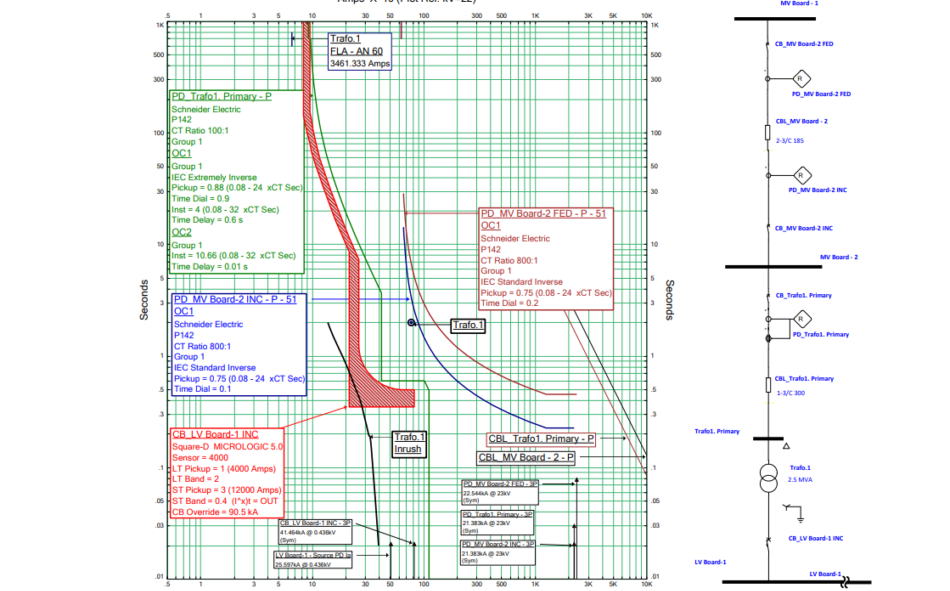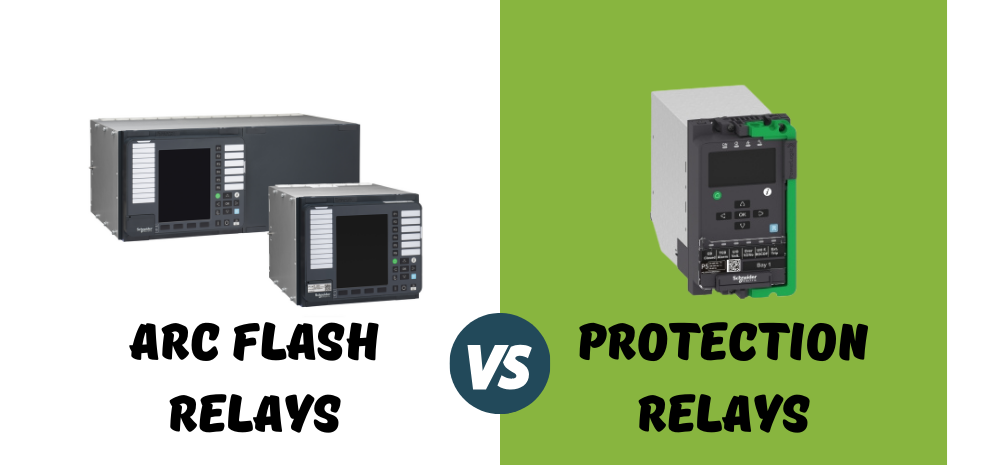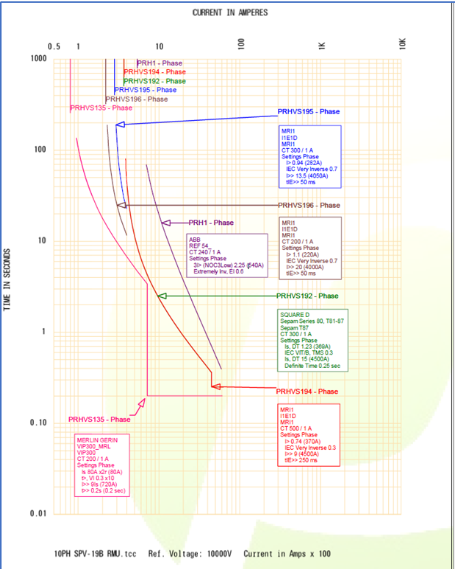We use cutting-edge technology from ETAP to develop a digital twin of your electrical network. This is a powerful virtual replica of a physical system which we can then subject to different operating scenarios and simulations to determine how best to design, manage, and maintain your power system.
1. Real-Time Visualisation:
A digital twin provides a dynamic, real-time visualisation of your electrical network. This capability allows us to monitor the system’s performance at any given moment, making it easier to detect and address issues before they become critical. Real-time visibility is invaluable for ensuring system reliability and safety.
2. Predictive Analysis:
System modelling isn’t just about showing the current state of your network; it’s also a tool for forecasting and predicting future events. Through advanced algorithms and data analysis, a digital twin can simulate various scenarios, helping you to anticipate potential problems and optimise system performance. This predictive capability reduces downtime and maintenance costs.
3. Risk Mitigation:
Electrical systems are complex and prone to various risks, from faults to load imbalances. A digital twin allows us to simulate fault scenarios and their impacts on the network, enabling us to implement preventive measures and mitigation solutions. This proactive approach minimises the risk of unexpected outages and ensures business continuity.
4. Energy Efficiency:
The push for more sustainable and energy-efficient electrical systems is a global priority. A digital twin can assist in optimising energy consumption by simulating and analysing the network’s energy use. This data helps identify areas where energy efficiency can be improved, leading to cost savings and a reduced environmental footprint.
5. Remote Monitoring and Control:
In an era of connectivity and remote work, a digital twin offers the ability to monitor and control electrical networks from anywhere with an internet connection. This feature is especially valuable for distributed systems, ensuring real-time insights and actionability.
6. Cost Savings:
A digital twin helps reduce operational costs through efficient resource utilisation and predictive maintenance. By identifying and addressing issues in their early stages, you can minimise emergency repairs, extend the lifespan of equipment, and optimise the use of resources, ultimately resulting in significant cost savings.
7. Improved Decision-Making:
Having access to accurate, real-time data and simulations enhances decision-making at all levels of an organization. Whether you’re managing a power utility or a commercial facility, a digital twin equips you with the insights needed to make informed choices regarding resource allocation, system upgrades, and capacity planning.
In conclusion, the adoption of a digital twin for your electrical network can revolutionise the way you manage and optimise your power systems. By offering real-time visualisation, predictive analysis, risk mitigation, and enhanced decision-making, a digital twin empowers you to create more reliable, efficient, and sustainable electrical networks. It’s a technology that not only ensures safety and reliability but also offers a significant return on investment through reduced costs and improved operational efficiency. Embracing the digital twin is more than a technological advancement; it’s a leap toward a smarter, more resilient electrical future.
To discuss the possibility of a digital twin for your network, or to hear about other services contact us below.













